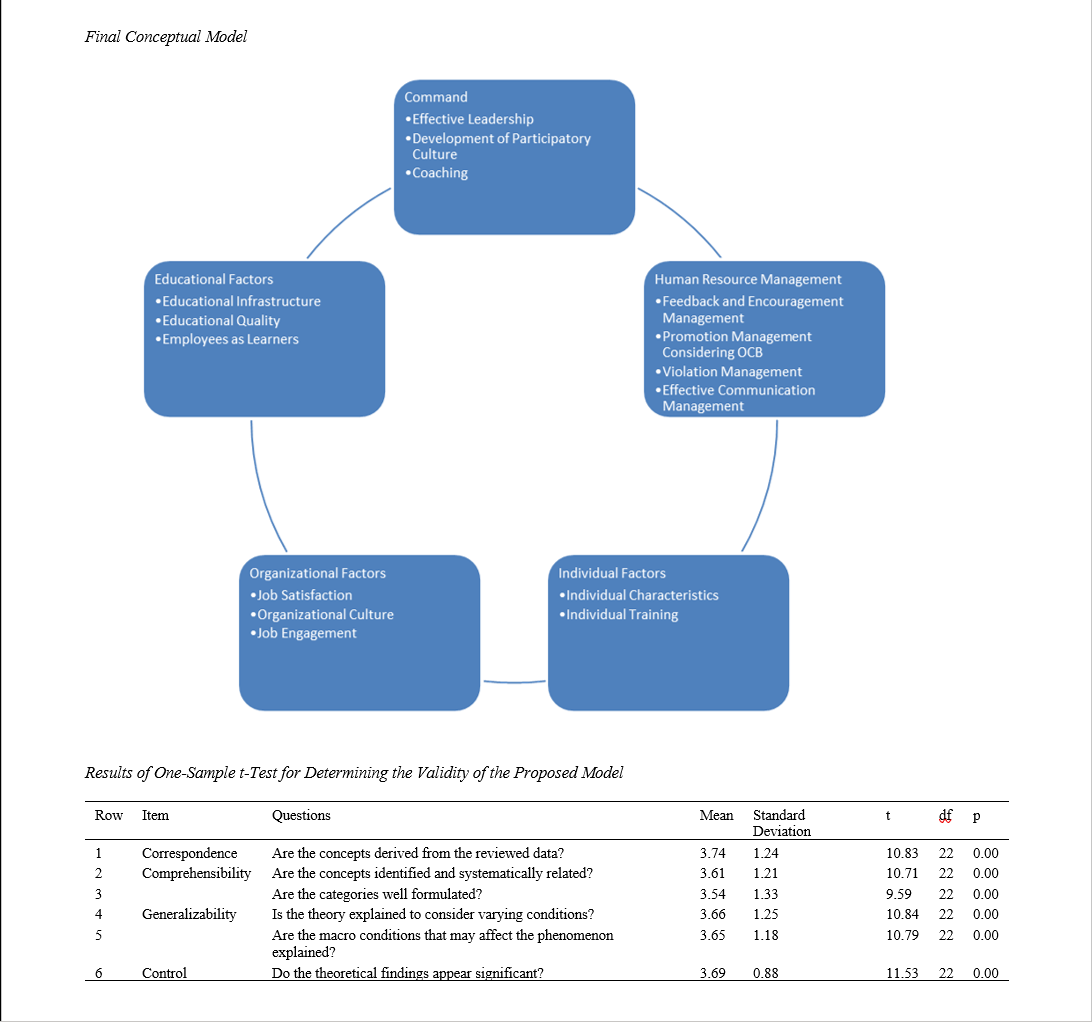Formulation of a Qualitative Model for the Development of Organizational Citizenship Behavior and Its Managerial Solutions and Validation
Keywords:
Organizational Citizenship Behavior, Model, Appropriate Managerial SolutionsAbstract
Objective: The aim of this research was to formulate a model for the development of organizational citizenship behavior (OCB), its appropriate managerial solutions, and its validation.
Methodology: This study is fundamental-applied in terms of its objective and qualitative in nature, employing synthesis research and grounded theory. The research population comprised all studies related to the topic, as well as academic and organizational experts. The sample size in the qualitative section included 19 interviewees selected through purposive sampling and based on the principle of saturation. Data collection tools included a synthesis research checklist and semi-structured interviews. To calculate validity, expert opinions were used, and for reliability, the retest method and intra-rater agreement were employed. The data analysis method involved theoretical coding (open, axial, and selective).
Findings: The research results indicated that the dimensions of OCB identified in Islamic Azad Universities of Fars Province included objective (citizenship knowledge, citizenship attitude, and citizenship skill) and behavior (individual behavior, social behavior, and organizational behavior). Additionally, influencing factors included individual factors (individual characteristics and individual training), organizational factors (job satisfaction, organizational culture, and job engagement), and educational factors (educational infrastructure, educational quality, and staff as learners). Furthermore, managerial solutions were identified based on dimensions of command (effective leadership, development of participatory culture, coaching) and human resource management (feedback and encouragement management, promotion management considering OCB, violation management, and effective communication management).
Conclusion: Ultimately, based on identified indicators and components, the conceptual model of the research was presented. This model, derived from the qualitative sections (synthesis research and expert interviews), demonstrated a good fit.
Downloads

Downloads
Additional Files
Published
Submitted
Revised
Accepted
Issue
Section
License
Copyright (c) 2024 Sara Rezaeian (Author); Fattah Nazem (Corresponding Author); Mohammad Naghi Imani (Author)

This work is licensed under a Creative Commons Attribution-NonCommercial 4.0 International License.















